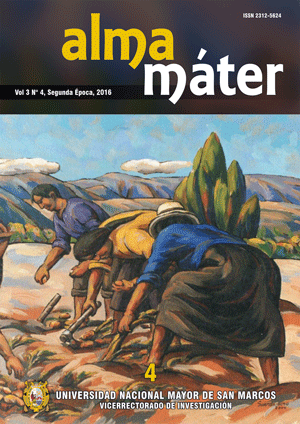THE CHIRISUYA ANDINA: DIASPORA OF ARAB CULTURE IN PERU
Keywords:
Popular Instruments, Chirisuya, Water Festival, Arab Legacy.Abstract
In several regions of Peru today are still practiced the musical instrument known aschirisuya,the family of oboes. It is a wind instrument of Arab origin, which arrived in America with the Spanish, to accompany religious and ceremonial rites, then it became popular and spread to different regions of the colonies of New Spain, Granada and Peru. In Peru, the Andean were mainly groups who adopted it best to give the musical background to their parties and various cultural events, both agricultural and religious Catholics. In Spain it was known by the name ofchirimiaodulzaina, for acute characteristic sound. With this name he was known in colonial Peru, but spread to other regions, he changed tochirisuya, keeping its original name only in parts of the coast. Today it is used especially in celebrations and rituals of the “champería” or water parties, both in Lima and also the people of Ayacucho, Huancavelica and Apurimac. The chirisuya is also used in the animation of Christian religious holidays associated with other instruments. The instrument is traditional manufacturing, carved on a hollowed wood, with a quill tab and holes for sound notes. The musicians are equally popular musicians in each location, which transmit their knowledge to manufacture it and manipulate it, from generation to generation. In this paper we deal with their symbolic role in rituals dedicated to the water of the Andean people of Peru.Downloads
Published
Issue
Section
License
Copyright (c) 2016 Román Robles Mendoza, Raquel Jackelyne Flores Yon

This work is licensed under a Creative Commons Attribution-NonCommercial-ShareAlike 4.0 International License.

Alma máter segunda época by Vicerrectorado de Investigación y Posgrado is licensed under a Creative Commons Reconocimiento-NoComercial-CompartirIgual 4.0 Internacional License.
Creado a partir de la obra en http://revistasinvestigacion.unmsm.edu.pe/index.php/alma/index.
AUTHORS RETAIN THEIR RIGHTS:
a. Authors retain their trade mark rights and patent, and also on any process or procedure described in the article.
b. Authors retain their right to share, copy, distribute, perform and publicly communicate their article (eg, to place their article in an institutional repository or publish it in a book), with an acknowledgment of its initial publication in Alma máter segunda época.
c. Authors retain theirs right to make a subsequent publication of their work, to use the article or any part thereof (eg a compilation of his papers, lecture notes, thesis, or a book), always indicating the source of publication (the originator of the work, journal, volume, number and date).



